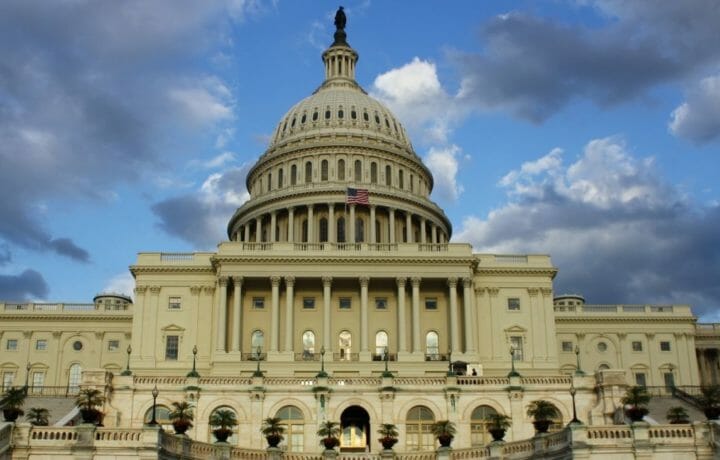This week, representatives from the Aircraft Carrier Industrial Base (ACIBC) were in Washington D.C. for the trade group’s two-day conference to meet with more than 130 members of Congress to address the challenges facing the 2,000 supply-chain companies of the industrial base. In addition, they looked to discuss the importance of predictable and stable aircraft carrier program funding.
A key consideration was what Congress now needs to do to maintain a healthy and productive industrial base with the capacity and talent to build the fleet that the nation requires to address the growing threats from China, which launched its third aircraft carrier last year.
“This week, the ACIBC went to Capitol Hill to advocate Congress for steady and predictable funding for the CVN program. ACIBC represents 2,000 company supply base in 44 states performing over $9.4 billion worth of work on carrier construction and maintenance,” said Lisa Papini, ACIBC’s new chair and president, and CEO of Dante Valve.
“The message to Congress: To sustain a healthy and productive industrial base with the capacity and talent to build the fleet our nation demands, nuclear-powered aircraft carriers should be procured as a two-ship buy with at least three years of advance procurement funding to be constructed on four-year intervals,” Papini told ClearanceJobs.
Two Ship Buy
The ACIBC is also urging the members of Congress to support another two-ship buy for the fiscal year 2025 (FY25). It was last August that the U.S. Navy urged Congress to buy its next two aircraft carriers in a single contract, as it did for CVNs 80 and 81 – the future USS Enterprise and USS Doris Miller respectively.
“As a coalition, we support the funding in the president’s budget (PB23) as it is sustained from the multi-ship purchase of CVN 80 and 81 in 2019. We want to build off that success and do another for CVN 82 and 83 next year,” added Papini.
“We’re showing Congress the industrial base is resilient and has pushed through headwinds from the pandemic like supply chain challenges and labor shortages because of the stability this block buy provided us, so we should do it again,” she continued.
Two-Ship Buy – Four-Year Intervals
The ACIBC has also called for the Navy’s future nuclear-powered carriers to be procured as a two-ship buy with at least three years of advance procurement funding to be constructed on four-year intervals.
“The Navy and shipyards have done numerous studies and they have found this is the most optimal build schedule for carrier construction,” explained Papini. “And it makes the most sense for the industrial base to get funding with a longer lead time to be able to purchase and procure materials efficiently and cost-effectively. The last two-ship buy of CVN 80 and 81 saved the Navy, the government, and the taxpayer over $4 billion.”
The ACIBC conducted a recent survey in February of 2023 which showed that 85% of suppliers said that the multi-ship procurement strategy of CVN 80 and 81 helped save jobs at their company over the past three years.
“Conversely, 97% say that if intervals between keels are extended from 4 to 5 years, it would negatively impact their business,” said Papini.
The Risk of Falling Behind China
Though the U.S. still maintains 11 nuclear-powered carriers, as well as seven amphibious assault ships (LHDs), which can operate with the Lockheed Martin F-35B Lightning II, the short/vertical takeoff and landing variant of the Joint Strike Fighter, China’s People’s Liberation Army Navy (PLAN) has surpassed the size of the U.S. Navy as the world’s largest naval force.
The concern is that the U.S. could lose its advantage if it can’t maintain the carrier advantage.
“The biggest challenges facing our industrial base are fluctuations in demand for new Navy ships, difficulty in hiring and retaining qualified workers, supply-chain disruptions, and inflation in increasing costs for materials,” said Papini.
The Naval Industrial Base is considered in poor shape, but groups including the ACIBC are now pushing lawmakers to do something about the problem.




